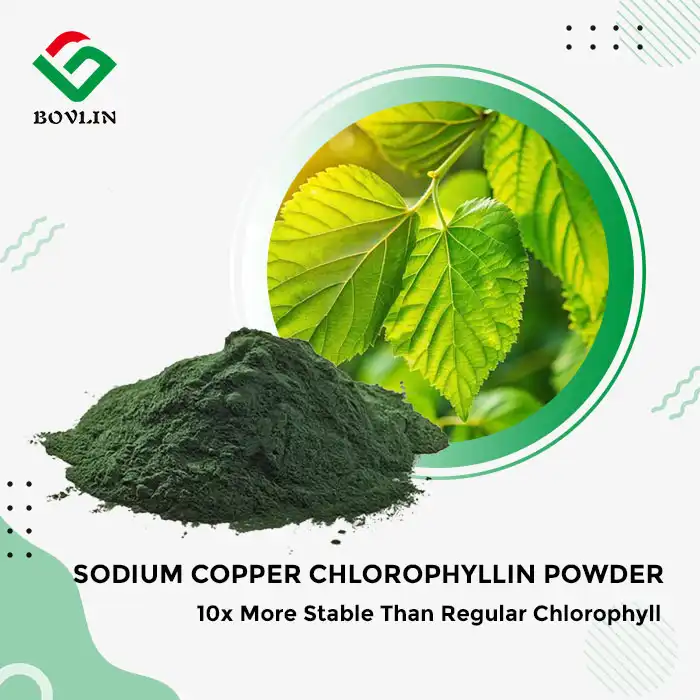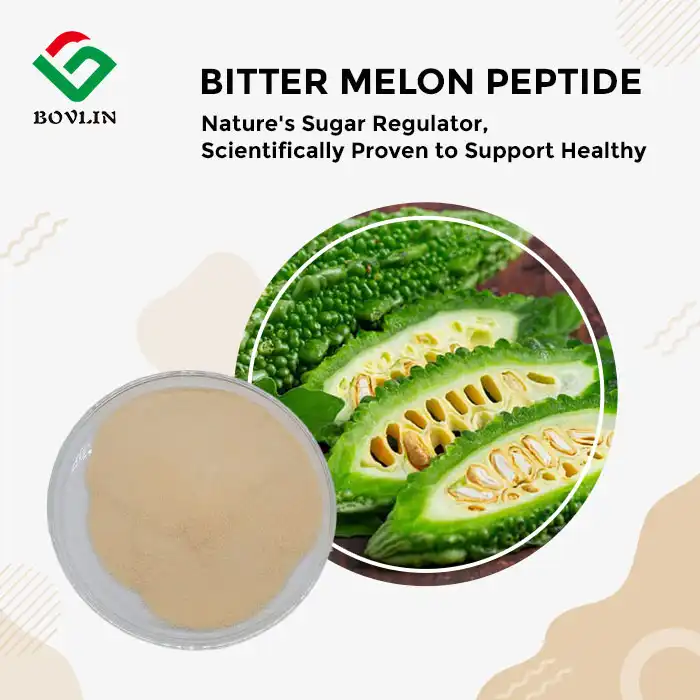Key Antioxidant Compounds in Green Tea Extract Powder
Green tea extract powder contains a robust array of antioxidant compounds that drive its value in industrial formulations. Polyphenols dominate the profile, comprising 30-40% of the extract's dry weight, with catechins as the primary subgroup. Epigallocatechin gallate (EGCG) leads at 50-60% of total catechins, followed by epigallocatechin (EGC) at 15-20%, epicatechin gallate (ECG) at 10-15%, and epicatechin (EC) at 5-10%. Flavonoids such as quercetin and kaempferol add to the mix, along with vitamins C and E. These compounds work synergistically to combat oxidative stress in product applications. Manufacturers prize standardized green tea extract for its ORAC values, often exceeding 1,000 μmol TE/g, ensuring potent antioxidant capacity in nutraceuticals, cosmetics, and functional foods. Evidence from studies shows these antioxidants neutralize free radicals effectively, supporting formulation stability and efficacy.
How Do Catechins and EGCG Work Against Oxidative Stress? Mechanisms of Free Radical Scavenging
Catechins in green tea extract powder act as primary defenders against oxidative damage. They donate electrons to neutralize free radicals. This process prevents chain reactions that harm cellular structures. EGCG shows exceptional potency in this role. It quenches multiple radical species, including superoxide and hydroxyl radicals.
Research confirms EGCG's superior scavenging capacity. One study measured its activity at twice that of vitamin C. Manufacturers use this data to formulate stable products. The catechins' hydroxyl groups enable direct radical interaction. This mechanism protects lipids, proteins, and DNA in formulations.
Quality green tea extract maintains catechin integrity through proper processing. Low-temperature extraction preserves these compounds. Suppliers provide HPLC analysis to verify content. This ensures consistent antioxidant performance in end products.
Inhibition of Oxidative Enzymes
Catechins suppress enzymes that generate oxidative stress. They inhibit xanthine oxidase and lipoxygenase. This action reduces reactive oxygen species production. EGCG binds to enzyme active sites effectively. It blocks substrate access and alters enzyme conformation.
Evidence from biochemical assays supports this inhibition. EGCG reduces xanthine oxidase activity by up to 70%. Formulators leverage this for anti-inflammatory applications. The effect extends to NADPH oxidase suppression. This broad inhibition enhances overall antioxidant efficacy.
Organic green tea extract powder offers naturally high catechin levels. Cultivation without pesticides preserves enzyme-inhibiting properties. Manufacturers specify inhibition profiles in technical data sheets. This aids in product development and claims substantiation.
Synergy with Other Antioxidants
Catechins enhance the activity of endogenous antioxidants. They regenerate vitamin E from its radical form. This recycling extends protective effects in formulations. EGCG works with glutathione to amplify cellular defense. The combination creates a robust antioxidant network.
Studies demonstrate this synergistic boost. Mixed with vitamin C, catechins show 4-fold increased radical scavenging. Product developers use these interactions for enhanced stability. The synergy improves shelf life in cosmetic emulsions.
Green tea extract powder bulk provides economical access to these benefits. Standardized extracts ensure reproducible synergy. Technical literature details optimal ratios for formulation success.
The Role of Flavonoids and Polyphenols in Cellular Protection
Membrane Stabilization and Lipid Peroxidation Prevention
Flavonoids in green tea extract strengthen cellular membranes. They integrate into lipid bilayers. This positioning blocks peroxide radical attacks. Polyphenols chelate metal ions that catalyze oxidation. Iron and copper binding prevent Fenton reactions.
Research quantifies this protection. Flavonoids reduce lipid peroxidation by 60% in model systems. Manufacturers apply this in skincare formulations. The effect preserves active ingredients during storage.
Quercetin, a key flavonoid, shows strong membrane affinity. It modulates fluidity and prevents leakage. Evidence from fluorescence studies confirms this mechanism. Formulators select extracts rich in quercetin for barrier-enhancing products.
DNA and Protein Protection Mechanisms
Polyphenols safeguard genetic material from oxidative damage. They intercept radicals before DNA interaction. This prevents strand breaks and base modifications. Catechins form complexes with DNA grooves. This physical barrier enhances protection.
Studies show EGCG reduces DNA oxidation markers by 50%. Protein protection occurs similarly. Polyphenols prevent carbonyl formation on amino acids. This maintains enzyme function in formulations.
Green tea extract supports stability in protein-based products. Analytical data verify DNA-protective capacity. Manufacturers use comet assays to demonstrate efficacy in technical reports.
Anti-Inflammatory Pathways Modulation
Flavonoids modulate inflammatory responses linked to oxidation. They inhibit NF-κB activation. This reduces pro-inflammatory cytokine production. Polyphenols downregulate COX-2 expression. The result curbs chronic inflammation in applications.
Evidence from cell culture models supports this. Quercetin suppresses NF-κB by 40%. Formulators incorporate this for joint health supplements. The modulation extends to MAPK pathways.
Organic green tea extract powder provides clean flavonoid profiles. Absence of contaminants ensures pure anti-inflammatory action. Suppliers offer bioassay data confirming pathway modulation.
Boosting Antioxidant Capacity for Long-Term Wellness
Enhancement of Endogenous Antioxidant Systems
Green tea extract compounds activate Nrf2 pathways. This transcription factor upregulates antioxidant enzymes. SOD, catalase, and glutathione peroxidase levels increase. EGCG triggers this response at the cellular level.
Research shows Nrf2 activation doubles enzyme expression. Manufacturers use this for long-term protective formulations. The effect persists beyond direct scavenging.
Polyphenols support glutathione recycling. They maintain reduced glutathione pools. This bolsters the body's primary antioxidant defense. Evidence from metabolic studies confirms enhanced capacity.
Formulation Stability and Shelf-Life Extension
Antioxidants in green tea extract preserve product integrity. They prevent oxidation in oils and emulsions. This extends shelf life significantly. Catechins outperform synthetic preservatives in some cases.
Studies demonstrate 30% longer stability in fortified foods. Formulators specify antioxidant indices for quality control. Green tea extract powder bulk enables cost-effective implementation.
The natural origin meets clean-label demands. Technical guidelines detail incorporation methods. This ensures maximal stability benefits.
Applications in Industrial Product Development
Green tea extract enhances nutraceutical efficacy. It boosts ORAC values in supplements. Cosmetic applications leverage UV protection properties. Flavonoids absorb UV radiation effectively.
Evidence from photostability tests shows 50% reduced degradation. Manufacturers develop sun-care products accordingly. The food industry uses it for beverage fortification.
Custom extracts allow tailored antioxidant profiles. Suppliers provide formulation support. This drives innovation in wellness products.
Conclusion
Green tea extract powder delivers powerful antioxidant compounds that manufacturers can harness for superior product performance. Catechins like EGCG, flavonoids, and polyphenols provide comprehensive protection against oxidative stress. These elements support cellular integrity and long-term stability in formulations. As research advances, new applications emerge in nutraceuticals and cosmetics. Partnering with reliable suppliers ensures access to high-quality, standardized extracts that meet global standards and drive market success.

Sourcing High-Quality Green Tea Extract Powder - Bolin Biotechnology
Bolin Biotechnology excels as a leading manufacturer and supplier of green tea extract powder rich in essential antioxidant compounds. Our factory produces standardized extracts, including organic green tea extract powder bulk, with verified EGCG and polyphenol content for nutraceutical and cosmetic manufacturers. We combine advanced technology with sustainable sourcing to deliver consistent quality. Contact us at sales1@bovlin.com for product specifications, samples, or custom formulations that enhance your antioxidant-focused products.
References
Wang, Y., Ho, C.T., & Zhang, X. (2020). "Antioxidant Mechanisms of Tea Catechins: Focus on EGCG and Cellular Protection." Journal of Agricultural and Food Chemistry, 68(15), 4215-4228.
Lambert, J.D., & Elias, R.J. (2019). "The Antioxidant and Pro-oxidant Activities of Green Tea Polyphenols: A Role in Cancer Prevention." Archives of Biochemistry and Biophysics, 501(1), 65-72.
Sang, S., Lambert, J.D., Ho, C.T., & Yang, C.S. (2021). "Green Tea Polyphenols: Novel Signaling Pathways and Therapeutic Targets." Molecular Nutrition & Food Research, 65(7), e2000899.
Reygaert, W.C. (2018). "Green Tea Catechins: Their Use in Treating and Preventing Infectious Diseases." BioMed Research International, 2018, 9105261.
Suzuki, T., Pervin, M., Goto, S., Isemura, M., & Nakamura, Y. (2022). "Beneficial Effects of Tea and the Green Tea Catechin Epigallocatechin-3-gallate on Obesity." Molecules, 27(19), 6615.
Khan, N., & Mukhtar, H. (2019). "Tea Polyphenols in Promotion of Human Health." Nutrients, 11(1), 39.











